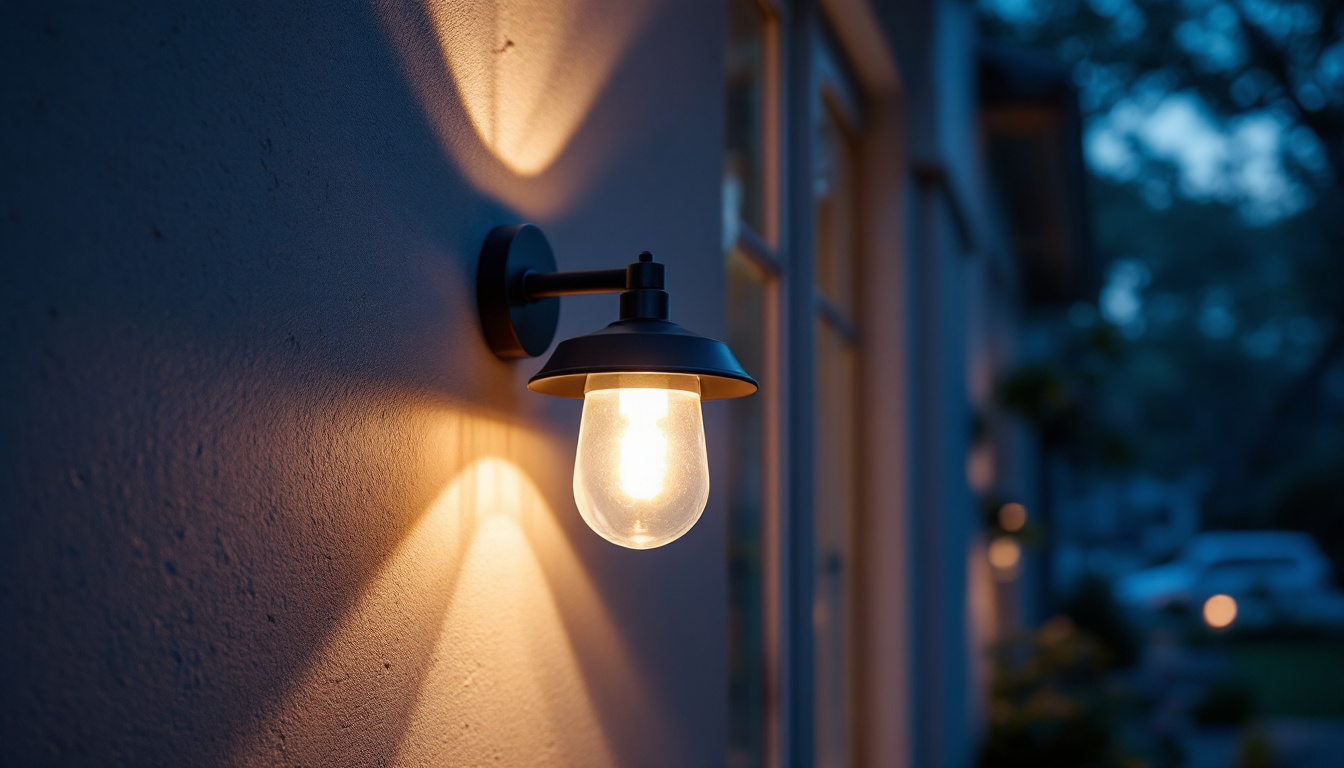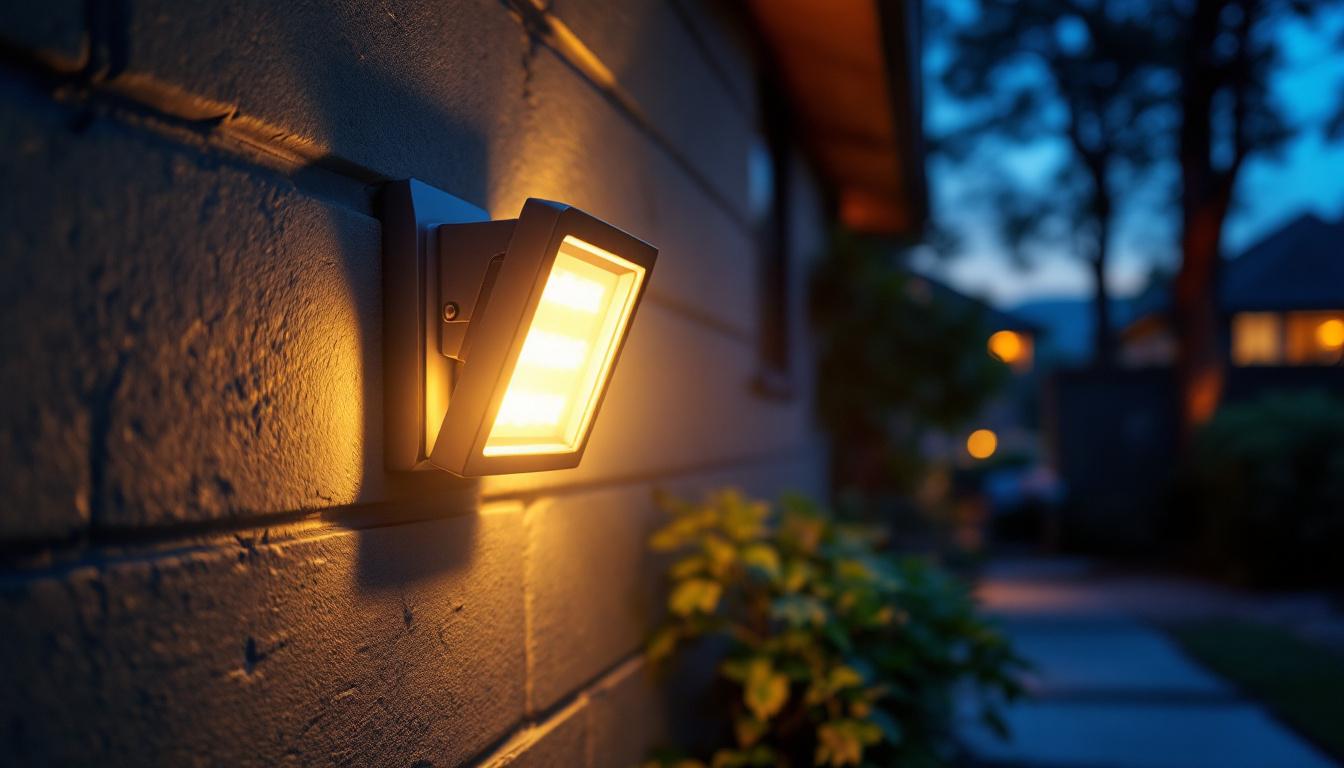
outdoor wall lamps serve both functional and aesthetic purposes, illuminating pathways, enhancing security, and adding charm to exterior spaces. However, lighting contractors often encounter pitfalls when installing these fixtures. Understanding common mistakes can lead to better results and satisfied clients. This article delves into frequent errors made by lighting contractors in outdoor wall lamp installations and offers insights on how to avoid them.
One of the most significant mistakes contractors make is selecting the wrong type of fixture for outdoor use. Outdoor wall lamps must be specifically designed to withstand various weather conditions. Using indoor fixtures outdoors can lead to premature failure due to moisture, temperature fluctuations, and UV exposure.
When selecting fixtures, it’s essential to check their rating. Look for options that are labeled as “wet-rated” or “damp-rated.” Wet-rated fixtures can handle direct exposure to rain and snow, while damp-rated fixtures can withstand humidity but should be protected from direct water contact. Ensuring the right rating is crucial for longevity and performance. Additionally, it’s wise to consider the materials used in the fixture’s construction. Corrosion-resistant materials like stainless steel or treated aluminum can significantly enhance durability, ensuring that the fixture remains functional and aesthetically pleasing over time.
Moreover, the choice of bulbs can also impact the fixture’s performance. LED bulbs, for instance, are not only energy-efficient but also produce less heat, which can be beneficial in preventing damage to the fixture itself and reducing energy costs. Understanding the compatibility of the fixture with different types of bulbs can further optimize its use, allowing for a well-lit outdoor space that is both safe and inviting.
Another common oversight is neglecting the design compatibility of the wall lamp with the overall architecture of the building. The style, color, and size of the fixture should complement the exterior design. A modern fixture on a traditional home can create a jarring visual effect, detracting from the property’s charm.
Contractors should consider the scale of the fixture in relation to the wall space and surrounding elements. A large, ornate lamp may overwhelm a small entryway, while a tiny lamp might get lost on a grand facade. Balancing aesthetics with functionality is key to a successful installation. Furthermore, the color temperature of the light emitted by the fixture can influence the ambiance of the outdoor space. Warmer tones can create a cozy and inviting atmosphere, while cooler tones may lend a more modern and stark feel. Understanding how these nuances affect the overall design will help in making informed decisions that enhance the property’s appeal.
Additionally, it’s important to think about the fixture’s placement in relation to landscaping features. For instance, strategically positioning fixtures to highlight trees, pathways, or architectural details can create a stunning visual impact while ensuring safety and accessibility. The interplay of light and shadow can transform an outdoor area, making it not only functional but also a beautiful extension of the home. Thoughtful design choices in this regard can elevate the overall aesthetic, creating a cohesive look that harmonizes with both the structure and its surroundings.
Placement of outdoor wall lamps is critical for both effectiveness and safety. One common mistake is installing fixtures at the wrong height. Typically, wall lamps should be mounted between 60 to 72 inches from the ground, depending on the fixture style and the area it illuminates.
Mounting lights too high can result in inadequate illumination, leaving dark spots that compromise safety. Conversely, placing them too low can create glare and make the fixtures vulnerable to damage. Proper height ensures that the light is distributed evenly and effectively enhances visibility.
In addition to height, the spacing between fixtures is another area where contractors often err. When installing multiple wall lamps, it’s important to maintain consistent spacing to avoid uneven lighting. A common rule of thumb is to space fixtures about 6 to 8 feet apart, depending on the wattage and type of bulb used.
Additionally, consider the areas that need illumination. High-traffic zones, such as entryways and pathways, require more concentrated lighting compared to decorative areas. A well-thought-out arrangement not only enhances safety but also contributes to the overall ambiance of the outdoor space.
Electrical safety is paramount in any lighting installation, yet many contractors overlook local codes and regulations. Each jurisdiction has specific requirements governing electrical installations, especially for outdoor fixtures. Failing to comply can lead to fines, increased liability, and unsafe installations.
Contractors should familiarize themselves with local electrical codes, including grounding requirements and circuit specifications. Ensuring that all installations meet these standards is essential for the safety of the property and its occupants.
Another critical mistake is using inadequate wiring for outdoor wall lamps. Outdoor fixtures often require different wiring than indoor lights due to exposure to moisture and temperature changes. Using the wrong gauge or type of wire can lead to overheating, short circuits, or even electrical fires.
Always use wiring that is rated for outdoor use and ensure that connections are properly sealed to prevent moisture ingress. Using weatherproof junction boxes and conduit can also protect wiring from the elements, ensuring a safer and more reliable installation.
In an age where energy efficiency is paramount, many contractors still overlook the importance of selecting the right bulbs for outdoor wall lamps. Traditional incandescent bulbs consume more energy and have a shorter lifespan compared to modern LED options.
LED bulbs not only provide better energy efficiency but also offer a range of color temperatures and brightness levels, allowing for greater customization of outdoor spaces. Additionally, they have a longer lifespan, which reduces maintenance costs and the frequency of replacements.
Another energy-efficient consideration is the integration of smart technology. Many outdoor wall lamps can now be equipped with smart features, such as motion sensors or timers, which help reduce energy consumption by ensuring lights are only on when needed.
Contractors should educate clients about these options, as they can enhance convenience and security while also contributing to lower energy bills. By promoting energy-efficient solutions, contractors can position themselves as knowledgeable professionals who prioritize sustainability.
Outdoor wall lamps are subject to the elements, and maintenance is crucial for their longevity. A common mistake contractors make is installing fixtures in hard-to-reach locations, making routine maintenance challenging for homeowners.
When planning installations, consider the ease of access for bulb replacements and cleaning. Fixtures should be positioned so that homeowners can easily reach them without the need for ladders or special equipment. This foresight can save time and frustration in the long run.
The materials used in outdoor wall lamps also play a significant role in maintenance. Some materials, such as untreated wood or certain metals, may deteriorate quickly when exposed to moisture and sunlight. Choosing durable, weather-resistant materials can significantly reduce maintenance needs and enhance the lifespan of the fixtures.
Contractors should recommend fixtures made from materials like stainless steel, aluminum, or high-quality plastics that are specifically designed for outdoor use. These materials not only withstand the elements but also require less upkeep, providing a better experience for clients.
Many contractors overlook the importance of lighting control options when installing outdoor wall lamps. While manual switches are common, automated controls can greatly enhance the functionality and convenience of outdoor lighting systems.
Automated systems, such as timers or smart home integrations, allow homeowners to set schedules for their outdoor lights, ensuring they are on when needed and off when not. This not only enhances security but also contributes to energy savings.
In addition to automation, incorporating dimmer switches can provide homeowners with greater versatility in their outdoor lighting. Dimmers allow users to adjust the brightness according to their needs, creating different atmospheres for various occasions.
For instance, brighter settings may be preferred during gatherings for safety and visibility, while softer lighting can create a cozy ambiance for intimate evenings. By offering these options, contractors can enhance the overall experience of outdoor spaces.
Outdoor wall lamps should not only serve a functional purpose but also harmonize with the surrounding landscape. A common mistake is to install fixtures without considering how they interact with plants, trees, and other landscaping elements.
Lighting should enhance the beauty of the landscape rather than overpower it. Thoughtful placement can highlight architectural features and create visual interest without detracting from the natural beauty of the surroundings. Contractors should consider the interplay of light and shadow to create a balanced and inviting outdoor space.
The color temperature of outdoor wall lamps can significantly affect the atmosphere of a space. Many contractors fail to consider this aspect, leading to lighting that feels harsh or unwelcoming. Warmer color temperatures (around 2700K to 3000K) tend to create a cozy and inviting environment, while cooler temperatures can feel stark and clinical.
Contractors should recommend color temperatures that complement the outdoor setting and align with the intended use of the space. For instance, warm lighting is ideal for patios and entertainment areas, while cooler lighting may be more suitable for task-oriented spaces like driveways and pathways.
Outdoor wall lamps are an essential component of exterior lighting design, offering both functionality and aesthetic appeal. However, lighting contractors must be aware of common mistakes that can compromise the effectiveness of their installations. By understanding the importance of selecting the right fixtures, ensuring proper placement, adhering to safety standards, and considering energy efficiency, contractors can enhance their projects and deliver exceptional results.
Additionally, focusing on maintenance, lighting control options, and landscape integration can further elevate the quality of outdoor lighting installations. By avoiding these common pitfalls, lighting contractors can build a reputation for excellence and ensure client satisfaction, leading to successful projects and lasting relationships.
Ready to avoid common installation mistakes and elevate your lighting projects? Choose LumenWholesale for your outdoor wall lamp needs. Our spec-grade lighting products are designed to meet the highest industry standards, ensuring you deliver excellence in every installation. With unbeatable wholesale prices and the convenience of free shipping on bulk orders, you can provide your clients with superior lighting solutions that blend quality, affordability, and convenience. Don’t compromise on your lighting supplies—discover the best value in wholesale lighting with LumenWholesale today.

Discover expert strategies and insights in “Ledcxteu-2-R-W: Mastering Tips for Lighting Contractors” to enhance your lighting projects.

Discover the essentials of square LED recessed lighting in just five minutes.

Discover how motion detector flood light bulbs are revolutionizing the lighting industry, offering contractors an innovative solution for enhanced security and energy efficiency.

Discover the essential guide to mastering LED light dimmers with our comprehensive handbook tailored for lighting contractors.